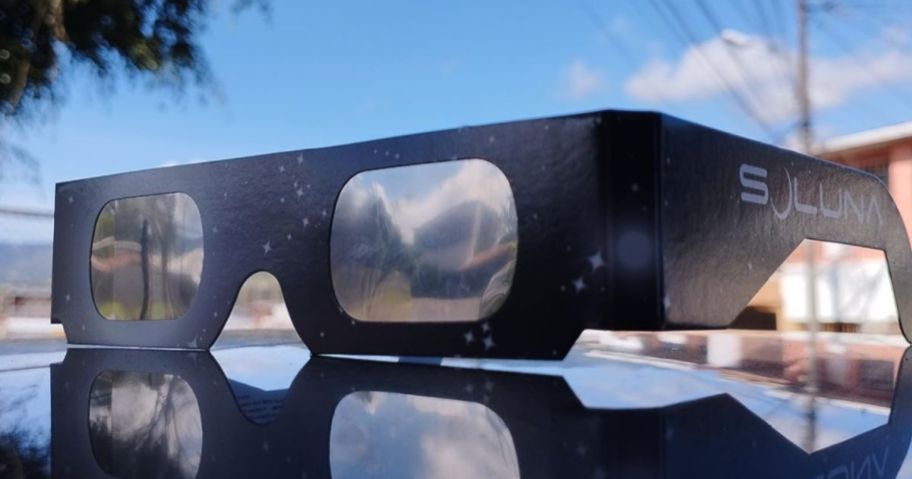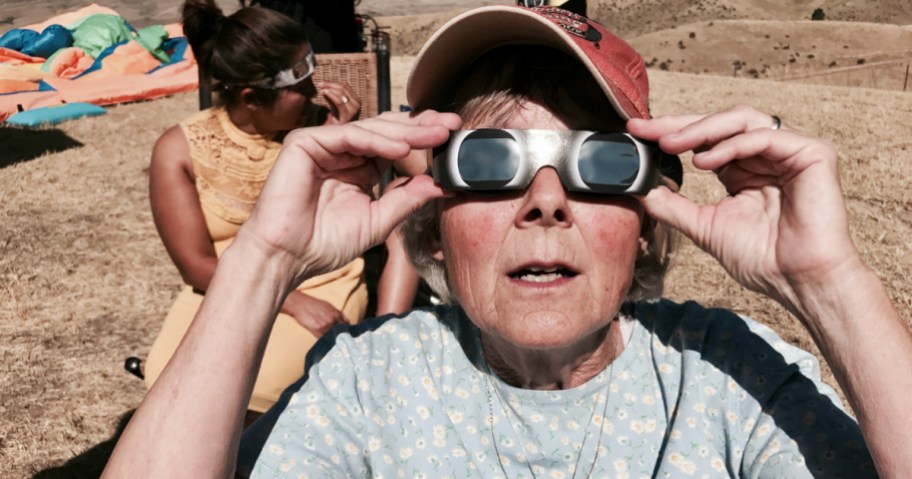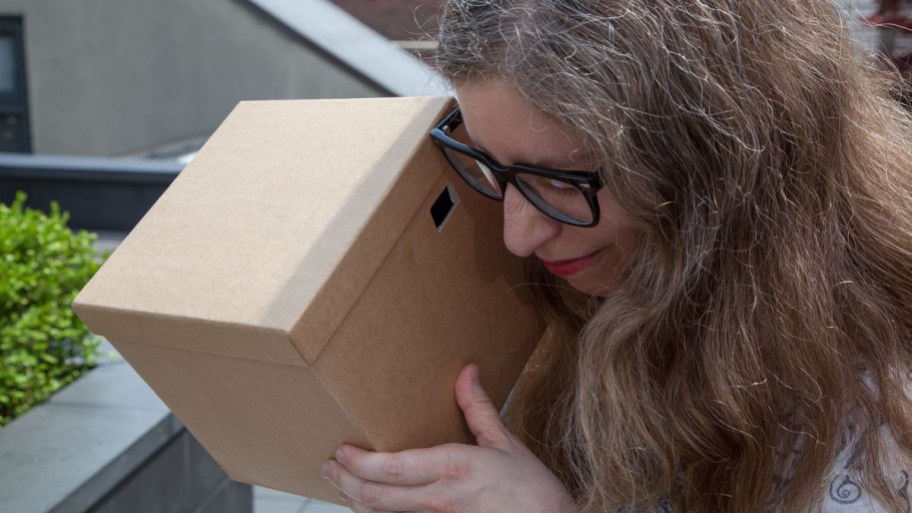
Are you ready for the solar eclipse? Here’s what you need to know about this exciting event!

The future’s so bright you’ll need these shades! 😎
A solar eclipse occurs when the Moon passes between our planet and the Sun, blocking the view of the Sun from Earth. This natural phenomenon is a sight to see and you’ll have the opportunity to do so soon!
When is the 2024 solar eclipse?
It takes place on Monday, April 8th, when a total solar eclipse can be seen across Mexico, Canada, and the United States.
The eclipse will first be seen about 11:07 PDT on Mexico’s Pacific coast becoming visible in the United States starting around 1:30 CDT in South Texas. The path of the eclipse will pass over thirteen states including Texas, Oklahoma, Arkansas, Missouri, Illinois, Kentucky, Indiana, Ohio, Pennsylvania, New York, Vermont, New Hampshire, and Maine. Visit NASA’s website to view the full path of the eclipse and the exact times it will be visible in certain U.S. locations.
How long does a solar eclipse last?
The eclipse will last around 2.5 hours with the peak being about an hour after you start to see it.
You won’t want to miss this event! The next total solar eclipse that can be seen by bordering states won’t come around again until August 2044, so you’ll want to try to catch this one if you can! We’re sharing where to go to see the eclipse and where to buy the solar glasses you’ll need to wear in order to view the event safely!
A few of the best towns to spot the total solar eclipse in 2024 according to Astronomy.com:
- Radar Base, TX starting at 12:10 p.m. CDT
- Hillsboro, TX starting at 12:21 p.m. CDT
- Russellville, AR starting at 12:33:08 p.m. CDT
- Cape Girardeau, MO starting at 12:41:51 p.m. CDT
- Indianapolis, IN starting at 1:50:31 p.m. EDT
- Cleveland, OH starting at 1:59:20 p.m. EDT
- Erie, PA starting at 2:02:23 p.m. EDT
- Niagara Falls, NY starting at 2:04 p.m. EDT
- Buffalo, NY starting at 2:04 p.m. EDT
- Mars Hill, ME starting at 2:22 p.m. EDT
See Astronomy.com’s full list of city recommendations.
We also suggesting reviewing Space.com’s recommendations of the most scenic places to view the eclipse which include spots like Cuyahoga Valley National Park, the Shawnee National Forest, the Finger Lakes, and the Adirondack Mountains.

What happens if you look at a solar eclipse?
Except for the short period when the moon is completely blocking the sun, the sun may be visible. This means you will need special glasses to view the eclipse in order to prevent damage like retinal burns and loss of central vision. It’s important to note that you also cannot look at the eclipse through a camera without using a special lens.
You may be wondering, “Can I use polarized glasses for a solar eclipse?”
NO! To be safe, we suggest you obtain the specialized solar eclipse glasses instead. These glasses are WAY darker than regular sunglasses and they follow the ISO 12312-2 international standard. You can buy these special solar glasses from the American Astronomical Society’s list of approved suppliers.
These ISO-certified solar eclipse glasses are available to buy now:
However, there are many places to get solar eclipse glasses for free!
Don’t want to pay? Here’s where you may be able to get free solar eclipse glasses…

1. Your local library
Thanks to a tip from a Hip2Save reader, we now know that many libraries carry free solar eclipse glasses!
Last year, the Space Science Institute sent 5 million solar eclipse glasses to 10,000 libraries across the country thanks to its Solar Eclipse Activities for Libraries (SEAL) program which is funded by the Gordon and Betty Moore Foundation. This program is now closed for the time being, but your library may have benefitted from the program!
To see if your library has them available, call your local branch or visit the SEAL website to see a map of participating libraries. A few major libraries are participating in giving away free solar glasses like the Fresno County Public Library in California, the Buffalo-Erie County Public Library, and the Columbus Metropolitan Library.
2. Your nearest Warby Parker store
Visit any Warby Parker store to scoop up a FREE pair of ISO-certified solar eclipse glasses. The stores are giving them away starting April 1st for as long as supplies last. You can pick up two pairs of glasses per family. Use their location finder to locate a store near you.
If they are out of glasses, the store will provide you with an eclipse pinhole projector that you can use to view the eclipse indirectly!
3. Zoos, Gardens, Townships, & Museums
Some local zoos and museums may be hosting solar eclipse events or giving away free glasses.
A few museums hosting events and/or providing free glasses include:
Other museums are hosting events with either paid tickets or a small fee for glasses, such as the Fort Worth Museum of Science & History. Call the local institutions or town halls near you to see if they have glasses available.
4. Colleges & Educational Institutions
It’s worth calling up your local colleges to see if they are hosting free solar eclipse viewing parties that include glasses. The University of Texas at San Antonio is one institution that will be handing out free solar eclipse glasses to attendees.
5. Astronomy Clubs or Eclipse Ambassadors
The Astronomical Society of the Pacific has recruited Eclipse Ambassadors to provide free solar eclipse glasses and other resources to underserved communities. See their website for a map of Eclipse Ambassadors near you.
Lastly, it doesn’t hurt to check with your local planetariums and astronomy clubs to see if they are hosting events or providing free solar eclipse glasses to the public.
6. SolarEclipse.US
Do you work for a public school? Head over to SolarEclipse.US to apply for up to 25 FREE pairs of solar eclipse glasses. The deadline to apply is March 1, 2024.

Other options for viewing the solar eclipse…
If you can’t get your hands on a pair of solar eclipse glasses, you don’t have to miss out on the fun! NASA often broadcasts eclipses on their website or YouTube channel. This footage will be safe for you to view.
You can also view the eclipse indirectly by making a DIY solar viewer. Follow either the Space.com, NASA, Warby Parker, or Live Science tutorial to create one of your own!
Source link






